
Nanaimo is a city of about 100,000 on the east coast of Vancouver Island, in British Columbia, Canada. "The Harbour City" was previously known as the "Hub City", which was attributed to its original layout design with streets radiating from the shoreline like the spokes of a wagon wheel, and to its relatively central location on Vancouver Island. Nanaimo is the headquarters of the Regional District of Nanaimo.

Gabriola Island is one of the Gulf Islands in the Strait of Georgia in British Columbia (BC), Canada. It is about 5 kilometres (3.1 mi) east of Nanaimo on Vancouver Island, to which it is linked by a 20-minute ferry service. It has a land area of about 57.6 square kilometres (22.2 sq mi) and a resident population of 4,500.

Mary Ellen Spear Smith was a politician in British Columbia, Canada. She was the first female Member of the Legislative Assembly (MLA) in the Legislative Assembly of British Columbia, and both the first female cabinet minister and the first female Acting Speaker and the first woman cabinet minister in the British Empire.
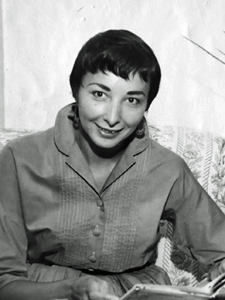
Phyllis Webb was a Canadian poet and broadcaster.
Jean A. Crowder is a Canadian businesswoman and politician. She served as a Member of Parliament for the New Democratic Party from 2004 until 2015.
James D. Lunney is a Canadian politician. He was the member of Parliament (MP) for Nanaimo—Alberni from 2000 to 2015.
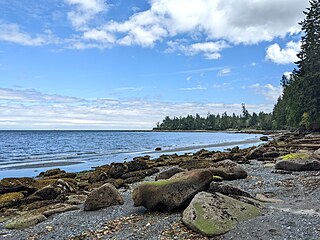
Sandwell Provincial Park is a provincial park in British Columbia, Canada. It is a small oceanfront site on Lock Bay, on the northeast shore of Gabriola Island. Hiking, swimming and beach-walking are popular activities here, though it is only accessible at low tide and park facilities are limited. There are also petroglyphs carved into the sandstone boulders on Lock Bay's foreshore.
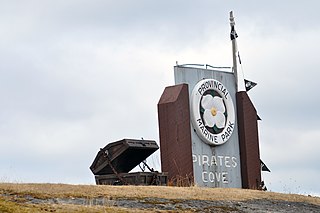
De Courcy Island is one of the Gulf Islands of the coast of southwestern British Columbia, Canada, located between the Pylades and Stuart Channels approximately 16 km (9.9 mi) southeast of Nanaimo and approximately 38 km (24 mi) west of Vancouver.
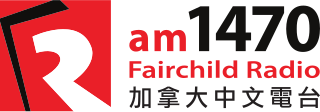
CJVB (1470 kHz) is a radio station in Vancouver, British Columbia, Canada, which broadcasts multilingual programming. Owned by the Fairchild Group, the station with a power of 50,000 watts, using two different directional patterns for daytime and nighttime operation. CJVB's studios and transmitter are located in Richmond.
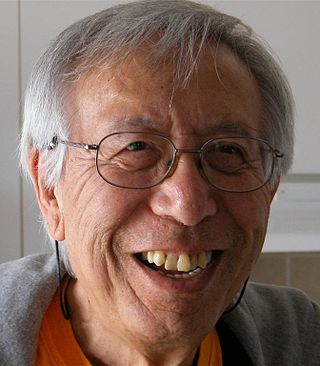
Bennet Randall Wong, was a Canadian psychiatrist, author and lecturer who co-founded the Haven Institute, a residential experiential learning centre on the west coast of Canada, with Jock McKeen. His writings focused on mental illness, group psychotherapy, humanistic psychology and personal growth.
Haven Institute, or The Haven is a centre for transformative learning situated on Gabriola Island in the Gulf Islands of British Columbia on the west coast of Canada. Founded by Jock McKeen and Bennet Wong, the centre offers programs for personal and professional purposes, including Certificate and Diploma Programs in Group Facilitation and Counselling Skills.

Tamas Dobozy is a Canadian writer and professor at Wilfrid Laurier University.

Nanaimo River is a river on Vancouver Island, British Columbia, Canada, located near the city of Nanaimo on the island's east coast. Its headwaters are in the Vancouver Island Ranges of central Vancouver Island and its mouth, the Nanaimo River estuary, is at the south end of Nanaimo Harbour in the Strait of Georgia. The estuary is part of the Pacific Estuary Conservation Program.

Nanaimo Harbour, also known as the Port of Nanaimo, is a natural harbour on the east coast of Vancouver Island in the Canadian province of British Columbia. The city of Nanaimo runs along the west side of the harbour. Three islands, Newcastle, Protection, and Gabriola, along with Duke Point, form the eastern edge. The Port of Nanaimo includes the Inner Harbour, Nanaimo River estuary, Departure Bay, the waters on the east side of Newcastle and Protection Islands, and Northumberland Channel. The port is under the management of the Nanaimo Port Authority.
Lynne Bowen is a Canadian non-fiction writer, historian, professor, and journalist, best known for her popular historical books about Vancouver Island and British Columbia. Over the years, Bowen has won awards such as the Eaton's British Columbia Book Award (1983), the Lieutenant Governor's Medal for Writing British Columbia History (1987), and the Hubert Evans Non-Fiction Prize (1993).

Lily Alice Lefevre was a Canadian poet and lyricist. After a success in Montreal with her poem "The Spirit of the Carnival", she moved in 1886 to Vancouver. Her 1895 book of poems, The Lions' Gate and Other Verses, was the first literary work published by a woman in British Columbia. Lefevre's poetry appeared in Canadian and British magazines. She also wrote lyrics to songs, performed by singers such as Clara Butt and John McCormack. She published two volumes of verse and a limited edition album. Lefevre became a patron of the arts and was a co-founder of the Vancouver Art Gallery.
Marjorie Leeming was a Canadian tennis player, badminton player and teacher. She won the Canadian Open ladies' singles title twice and was runner-up on four occasions. Leeming took the Canadian doubles championship three times and the mixed doubles twice. She won seven titles in British Columbia and was the Oregon State Tennis Championship singles winner in 1926. After her tennis ended due to injury, Leeming moved into education, co-authoring a 1935 school textbook on modern composition for use in schools in British Columbia. She taught badminton, golf and tennis to female students at the University of British Columbia before becoming assistant dean to its dean of women. Leeming is an inductee of the BC Sports Hall of Fame, the Tennis Canada Hall of Fame and the Greater Victoria Sports Hall of Fame.
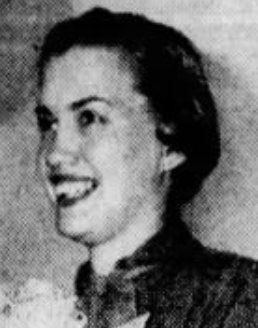
Lorna VindenAnderson, born Lorna Margaret Skidmore, was a Canadian wheelchair athlete, competing in pentathlon, track and field, archery, and swimming events at the 1967 and 1969 Wheelchair Pan American Games, and the 1968 Paralympics in Tel Aviv.
Julie Wheelwright is a British journalist, writer and film-maker, who lectures at City, University of London. Although raised in British Columbia, Canada, she was born in England and returned there in 1984 to complete a master's degree at the University of Sussex. Wheelwright worked as a journalist for national newspapers like The Guardian and The Observer and regularly wrote for Scotland on Sunday and BBC History. She published her first book in 1989 about women who cross-dressed to participate in war. Amazons and Military Maids: Women Who Cross-Dressed in the Pursuit of Life, Liberty and Happiness was chosen as one of The Times Literary Editor's Selections in February 1989. She has also published a biography and a film script exposing that although Mata Hari was convicted of espionage, she was not engaged in spying. Other works include a book and a film about her ancestor, Esther Wheelwright, and articles and a film about infanticide. Her latest book, Sisters in Arms: Female Warriors from Antiquity to the New Millennium, expanded on her first book and was shortlisted for the British Army Military Book of the Year in 2021. Since 2002, she has lectured at City, University of London. After earning her PhD in 2014, she became the director of the Centre for Culture and the Creative Industries at the university.
Helena Beatrice Richenda Parham was a British writer, mine owner, plantation owner and amateur botanist. She grew up in England and began publishing in 1885, when a visit to an aunt in Madeira inspired an interest in cultures and flora and fauna from other places. Before she married in 1896, she published a travel book, several novels, and founded a magazine. On her way to a journalism assignment in the Cape Colony, she met Charles John Parham, whom she would marry. The couple had five children, who were born in various colonies that would later become South Africa. In 1907, the family relocated to Hokitika, New Zealand, where Parham raised her family, gardened, and engaged in mining. When she and Charles were sued by another mining company, they won the case, but paying the expenses to defend themselves depleted their assets. They decided to establish a coconut plantation in Fiji and moved there in 1921.













